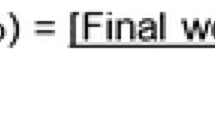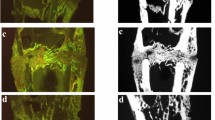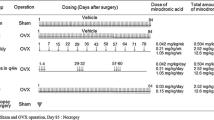Abstract:
This study evaluated the effect of Cenestin, a synthetic conjugated estrogens product, on the maintenance of trabecular bone microarchitecture, bone strength, and of bone turnover in the ovariectomized (ovx) rat model. Two doses of Cenestin were chosen in an attempt to approximate the equivalent human oral doses of 0.3 mg and 0.625 mg. Forty-nine 6-month-old retired female breeder Sprague-Dawley rats were randomly assigned to one of four groups: (1) sham-operated + vehicle; (2) ovx + vehicle; (3) ovx + day 1 post-ovariectomy Cenestin (8.12 mg/kg); (4) ovx + day 1 post-ovariectomy Cenestin (16.24 mg/kg) for 8 weeks. Trabecular structure of the right proximal tibia of each rat was imaged noninvasively by microCT. A compression test to induce a tibial plateau fracture was performed to determine the mechanical properties of the proximal tibia. Urine was collected on days 0, 14, 28, 42 and 56 and serum on days 0, 28 and 56 to assess biochemical markers of bone turnover including deoxypyridinoline crosslinks and osteocalcin. Both biochemical markers of bone turnover were analyzed by ELISA. Trabecular bone mass, structure, and connectivity density in the Cenestin-treated groups did not differ statistically (p>0.05) from those of the sham-operated + vehicle-treated rats, but all were significantly higher (p<0.05) than in the ovx + vehicle-treated rats. Structure Model Index, a measure of trabecular plate morphometry, in Cenestin-treated rats maintained a more equal mix of plate- and rod-like structures similar to the sham group, whereas the ovx group had predominantly rod-like trabeculae. Fracture load in the Cenestin (16.24 mg/kg) treated group was 31% (p<0.01) higher than in the sham + vehicle-treated group and 61% (p<0.05) higher than in the ovx + vehicle-treated group. Both the sham-operated + vehicle-treated and Cenestin-treated groups showed significantly lower urinary deoxypyridinoline crosslink excretion at all timepoints and serum osteocalcin at day 56 compared with the ovx + vehicle-treated group. In summary, Cenestin maintained trabecular bone microarchitecture and strength in an ovariectomized rat model of estrogen deficiency.
Similar content being viewed by others
Author information
Authors and Affiliations
Additional information
Received: 19 October 2001 / Accepted: 16 May 2002
Rights and permissions
About this article
Cite this article
Lane, N., Kumer, J., Majumdar, S. et al. The Effects of Synthetic Conjugated Estrogens, A (Cenestin) on Trabecular Bone Structure and Strength in the Ovariectomized Rat Model . Osteoporos Int 13, 816–823 (2002). https://doi.org/10.1007/s001980200113
Issue Date:
DOI: https://doi.org/10.1007/s001980200113




